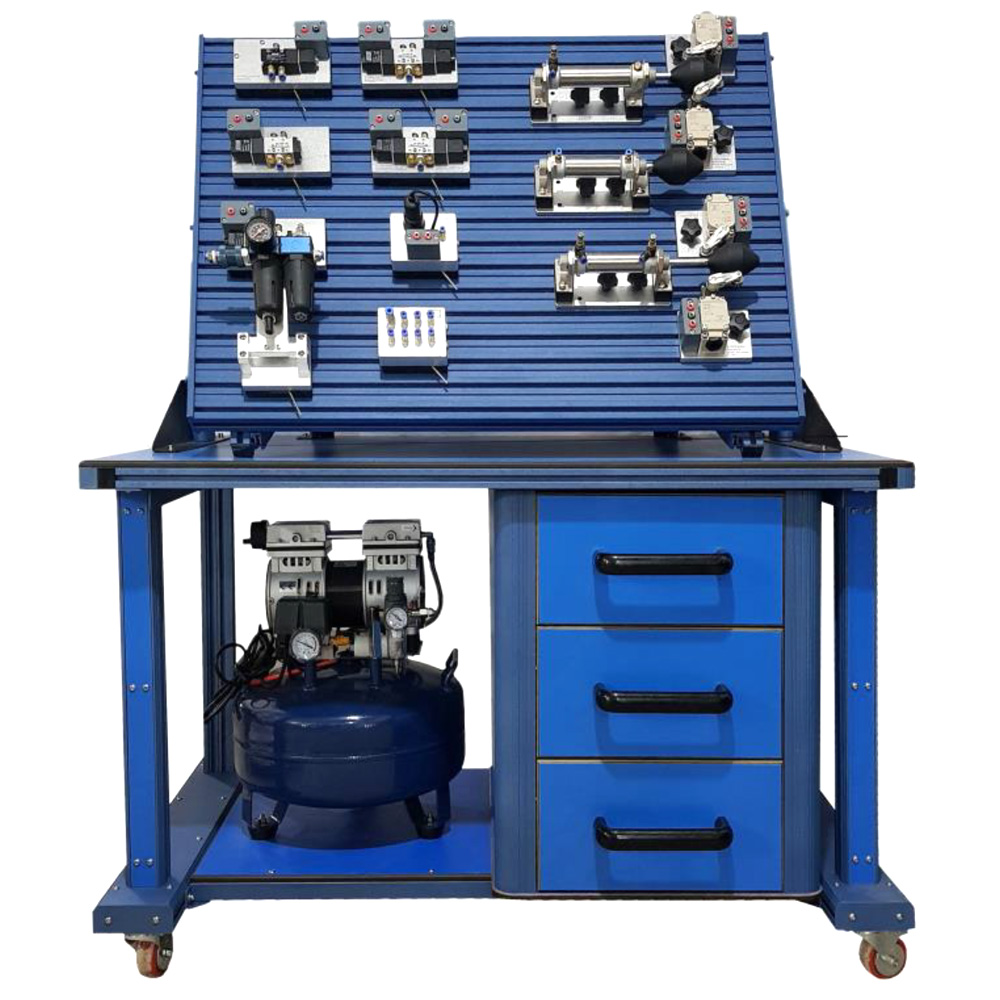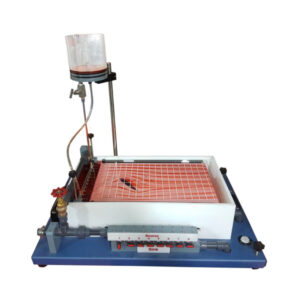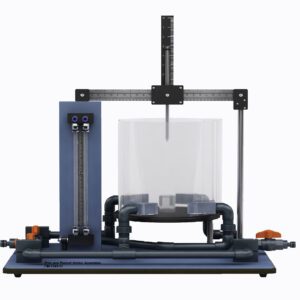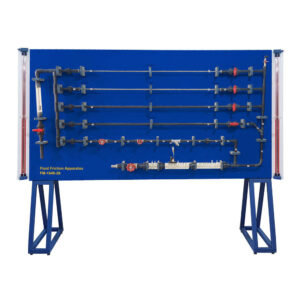An advanced pneumatic training system builds upon the basic components and concepts of a standard pneumatic training system to provide a more comprehensive and sophisticated learning experience. It incorporates advanced features and technologies to simulate real-world industrial pneumatic applications and challenges. These advanced features enhance the complexity and realism of the training system, enabling learners to develop advanced skills in designing and troubleshooting pneumatic systems in industrial applications. They provide a bridge between theoretical knowledge and practical implementation, preparing individuals for real-world challenges in the field of pneumatics.
Experiments:
- Physical principles of the pneumatic control system.
- Production and distribution of compressed air
- Structure and characteristics of pneumatic cylinders.
- Calculation of basic parameters.
- Function and use of pneumatic control valves.
- Recognition and drawing of pneumatic symbols.
- Drawing of pneumatic circuit diagrams according to standard.
- Pressure regulation and measurement.
- Direct and indirect control.
- Speed control circuits: input meter, output meter.
- Use of quick exhaust valves.
- Pneumatic logic controls.
- Representation of movement sequences and operating status.
- Pneumatic sequential controls.
- Pressure dependent controls with pressure sequence valves.
- Position dependent control with limit switch valves.
- Time-dependent controls with timed valves.
- Safety rules for the pneumatic system.




